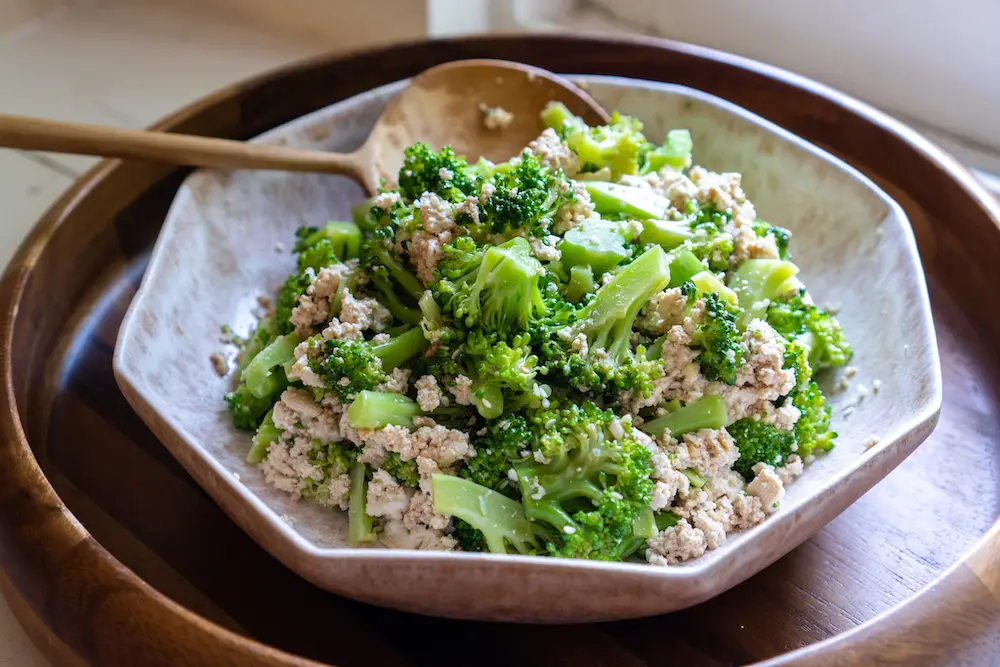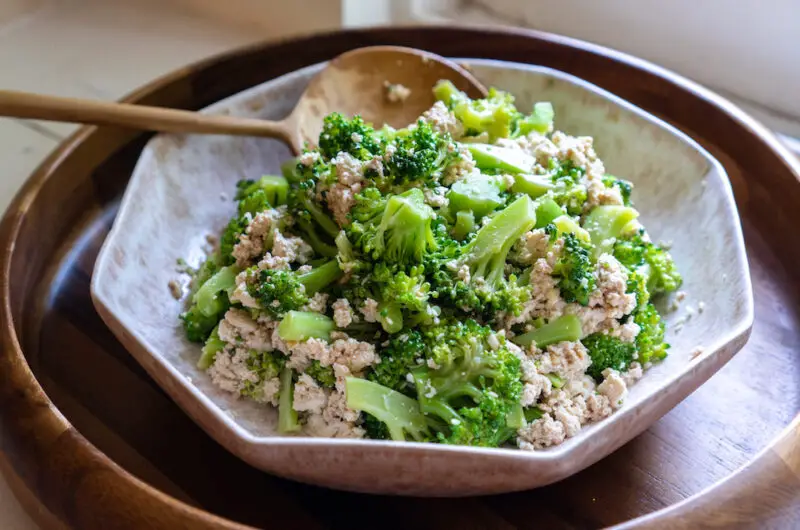This post may contain affiliate links. Please read my disclosure for details at the bottom of this page. As an Amazon Associate, I earn from qualifying purchases on this Korean tofu broccoli side dish recipe. I hope you enjoy learning about broccoli tofu muchim (aka broccoli dubu muchim or tofu broccoli muchim)!
Looking for some delicious vegetarian/vegan side dishes? If so, this Korean broccoli tofu muchim dish is perfect for you! This banchan takes very little time and energy to pull together, making it the perfect recipe for busy days of the week. I hope you enjoy learning how to make this quick & easy Korean broccoli tofu muchim side dish recipe!
What Is Broccoli Tofu Muchim?
‘Broccoli dubu muchim’ (브로콜리 두부무침) is a delicious vegetable-based Korean side dish made by seasoning broccoli and tofu. The term ‘broccoli’ (브로콜리) is the same in both Korean and English. Then, ‘dubu’ (두부) in Korean translates to ‘tofu.’
Finally, the Korean term ‘muchim’ (무침) literally translates as ‘to season’ or ‘seasoned.’ This term describes a certain style of dish typically seasoned with a dressing. These seasoned salad side dishes can be sautéed, marinated, steamed, dried, or even raw.
In the history of Korean food, this side dish is a relatively new invention. People didn’t begin preparing and serving this until sometime in the latter part of the 1900s (sometime between the early 1970s to early 1990s).
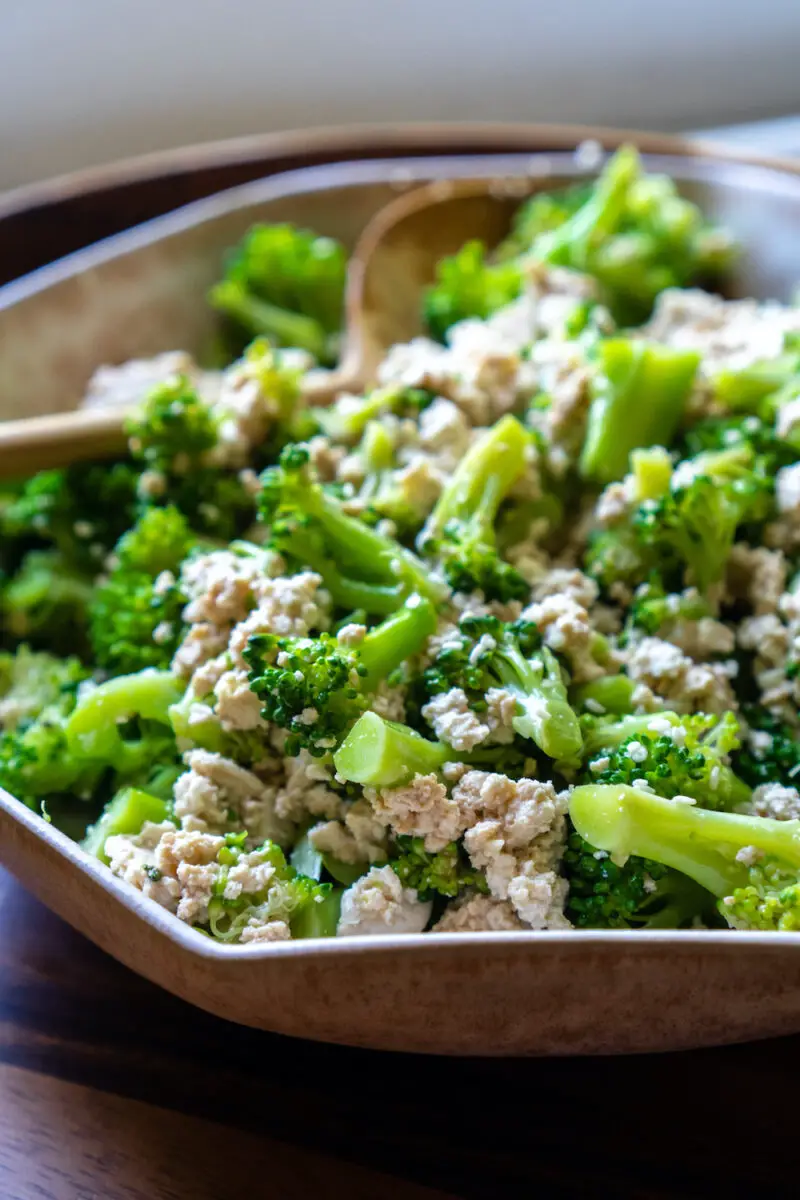
Broccoli Tofu Muchim Ingredients:
Below, I list the ingredients used to make this deliciously Korean broccoli tofu side dish. I also linked any informative articles on my site connected to these Korean ingredients:
Broccoli Tofu Muchim Ingredients:
- Broccoli
- Kosher Salt
- Extra-Firm Tofu
- Garlic
- Soy Sauce, Tamari, or Coconut Aminos
- Toasted Sesame Oil (Learn about this ingredient here)
- Toasted Sesame Seeds (Learn about this ingredient here)
Korean Broccoli Tofu Side Dish Tips & Tricks:
Here, I list some helpful tips & tricks to help you make this vegetable-based side dish. If you have any questions, leave a comment below or email me at [email protected]!
- First, cut the broccoli florets into smaller, bite-sized pieces. You can also cut the stem pieces into smaller chunks after removing any leafy sprouts on them. Wash the broccoli once you cut them into pieces.
- While preparing the broccoli florets, go ahead and start bringing a pot of salted water to a boil. Once it reaches a rolling boil, quickly blanch the broccoli pieces between 10 to 20 seconds.
- After blanching the broccoli, remove the florets using a slotted spoon. Place the florets in a bowl of ice-cold water. Placing them in the cold water stops the broccoli from continuing to cook. This allows them to stay firm without getting mushy. Quickly blanching broccoli and placing it in cold water also gives broccoli a bright green, fresh-looking color!
- Using the same water, blanch the block of extra firm tofu for a minute. Then, after removing it from the water, break the tofu block into crumbly pieces and squeeze excess water out using a cheesecloth (you can use paper towels, a tofu press, or other tools if you do not have a cheesecloth).
- Combine the freshly squeezed tofu, blanched broccoli florets, and sauce ingredients in a bowl and mix.
- Finally, place the banchan on a serving plate. Before serving, sprinkle some toasted sesame seeds on top!
- Serve as a banchan with a bowl of rice and other dishes (such as kimchi, jjigae, etc.)
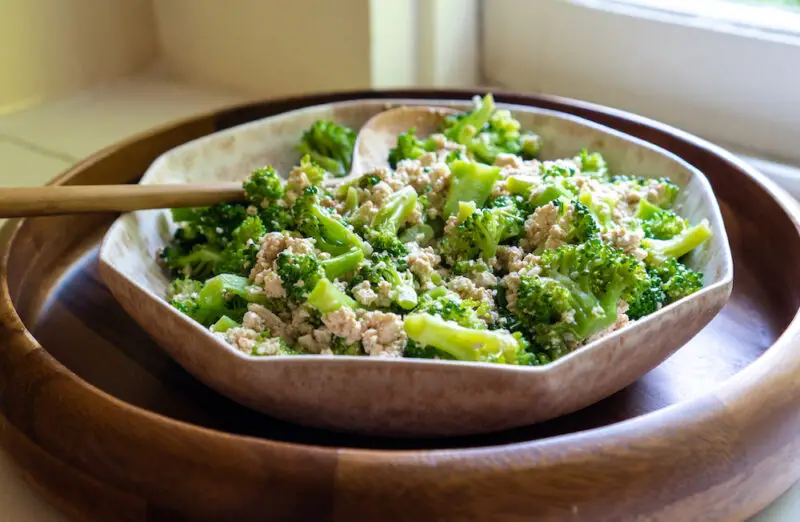
Broccoli Tofu Muchim Frequently Asked Questions:
Now that we learned some tips & tricks for making this Korean banchan recipe, I want to answer some questions you may have as well! If I do not answer your question, feel free to leave a comment in the section below or email me at [email protected].
Does This Recipe Contain Major Allergens? (Gluten, Soy, Etc.)
Note: Before listing the major allergens, I want to state that all of my recipes are naturally gluten-free because I use gluten-free versions of each ingredient. Below, I list that this recipe can contain gluten because many Korean ingredients (such as soy sauce, gochujang, and doenjang) contain gluten unless you buy gluten-free versions. This is true for other allergens listed below. I always list allergy substitutions in the next section of my post.
This recipe does not contain 6 of the 9 major allergens. It does not contain:
- Milk
- Tree nuts
- Peanuts
- Fish
- Eggs
- Crustacean Shellfish
This recipe does contain 3 of the 9 major allergens. It contains:
- Wheat (Gluten)
- Soybeans
- Sesame
Allergy Substitutions:
For those with celiac disease, gluten allergy, and/or wheat allergy: To make this recipe gluten and wheat-free, switch out the soup soy sauce for gluten-free tamari. You can find my list of gluten-free tamari brands in my article on the subject.
For those with a soy allergy: Like those with a gluten allergy, you need to avoid soy sauce and if you have a soy allergy. Instead of using soy sauce, I recommend using coconut aminos. It is an excellent soy sauce alternative and is naturally soy and gluten-free! If you have a soy allergy, you need to avoid the tofu as well. I recommend trying Burmese tofu (otherwise known as Shan tofu) which is made from chickpeas or yellow split peas rather than soy.
For those with a sesame allergy: If you have a sesame allergy, you need to omit the toasted sesame oil. This dish tastes delicious without those ingredients, though you will miss the nutty flavor. I recommend using Korean perilla oil instead to add that delicious flavor at the end.
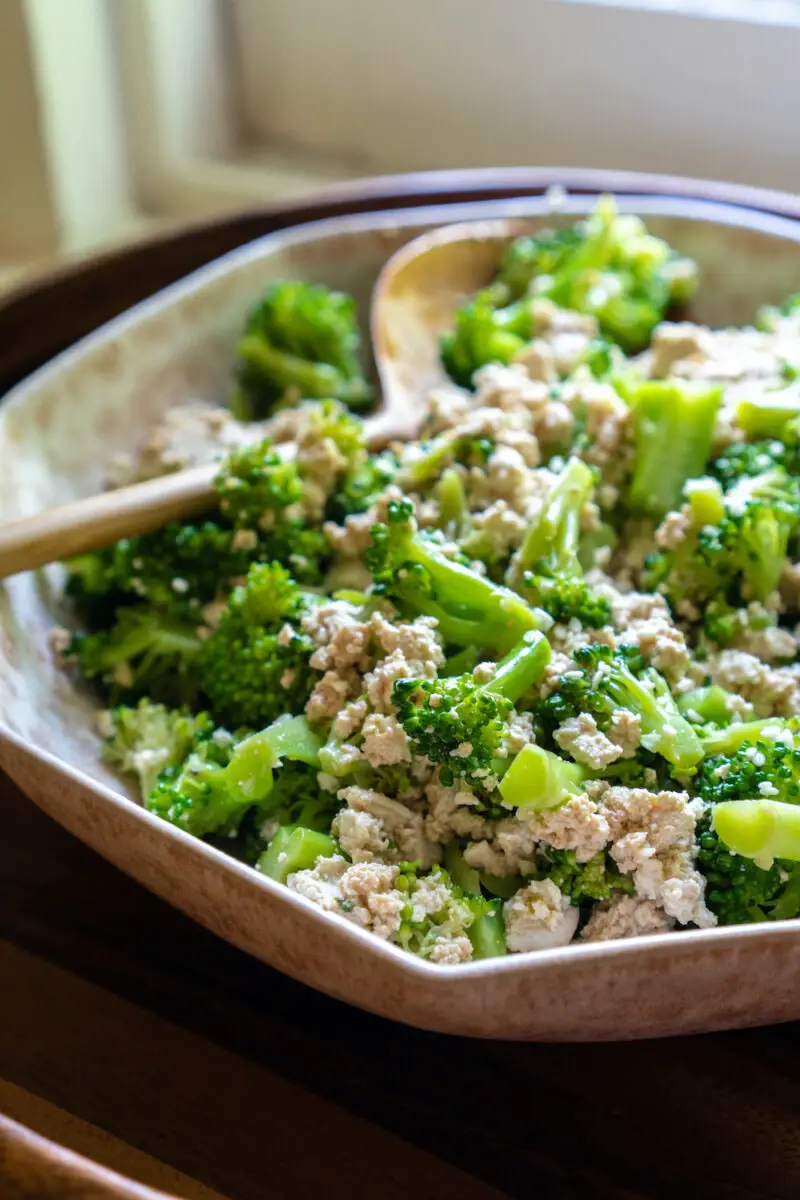
Is This Recipe Vegetarian or Vegan?
Excitingly, this recipe is both vegetarian and vegan! This recipe can be enjoyed by everyone following a specific plant-based diet or lifestyle.
For those interested in more information about living and traveling with a vegan lifestyle South Korea, check out my blog post on the subject!
Where Do I Buy the Ingredients?
You can buy all the necessary ingredients for this recipe at your local well-stocked grocery store as well as at your local Asian or Korean grocery store!
How Do I Store Leftovers?
To store the leftover tea, place the broccoli tofu muchim in an airtight container and store it in the refrigerator. Then, you can enjoy it chilled for up to three days!
I Hope You Enjoyed Learning How to Make Korean Broccoli Tofu Muchim!!
In the end, I hope you enjoyed learning how to make this deliciously Korean broccoli tofu side dish! If so, let me know in the comment section! Also, let me know if you have a favorite Korean banchan recipe you eat at home!
If you would like to read more about cooking, you can find further recipes on this blog. I listed some of my favorite Carving A Journey recipes below! For reference, many recipes are influenced by my family’s blended Korean and Southern heritage.
Further Carving A Journey Korean Vegetable Side Dish Recipes:
- Minari Muchim (Korean Watercress Salad)
- Mindeulle Namul Muchim (Korean Dandelion Greens Side Dish)
- Sigeumchi Namul (Korean Spinach Side Dish)
If you have any questions or comments, you can also email me at [email protected].
And, finally, I would love to hear from you through our social media as well! You can follow me at @carvingajourney on Instagram, Facebook, and Pinterest. I also started a vlog Youtube channel with my husband! Or, if you would like more articles like these, you can subscribe to the blog by joining the mailing list. Let me know if you try making this Korean broccoli tofu muchim recipe! Thank you so much for stopping by!
Carving A Journey is a participant in the Amazon Services LLC Associates Program, an affiliate advertising program designed to provide a means for sites to earn advertising fees by advertising and linking to Amazon.com. Although we may earn commissions for our endorsement, recommendation, testimonial, and/or link to any products or services from this website, these opinions are my own and I fully support these products.

